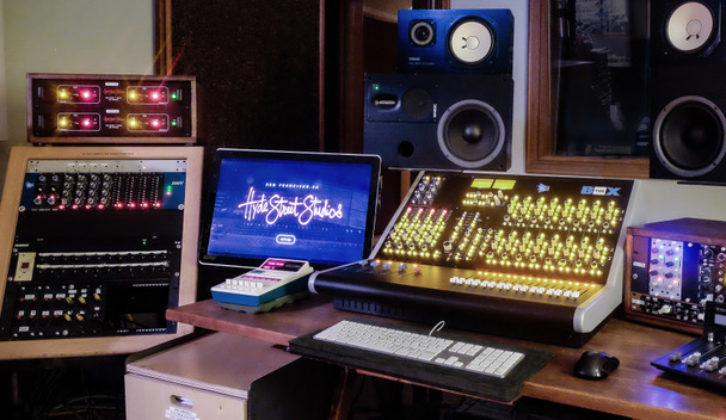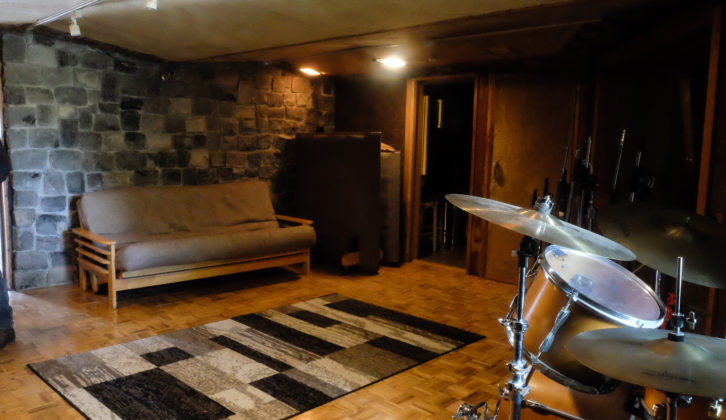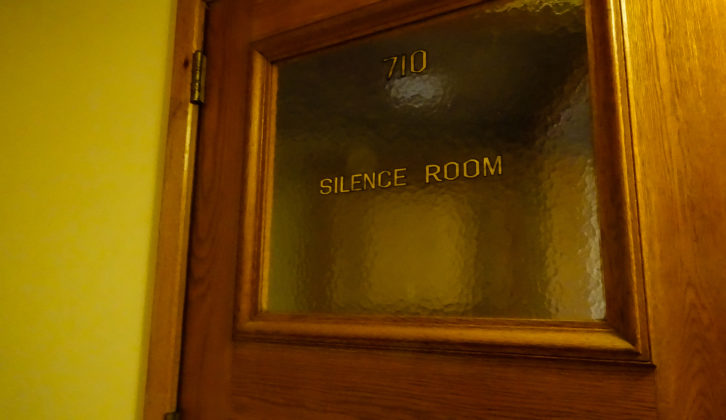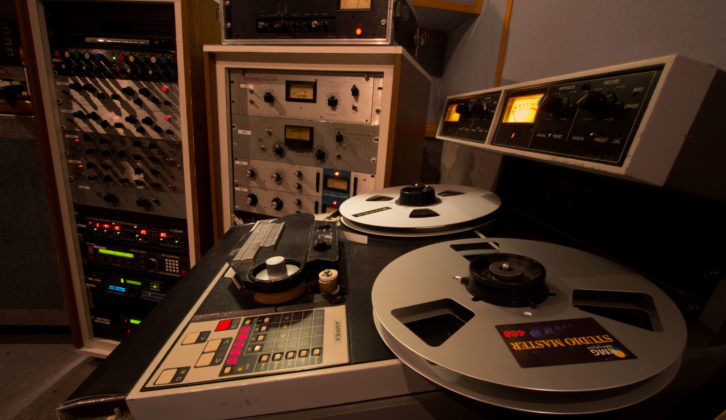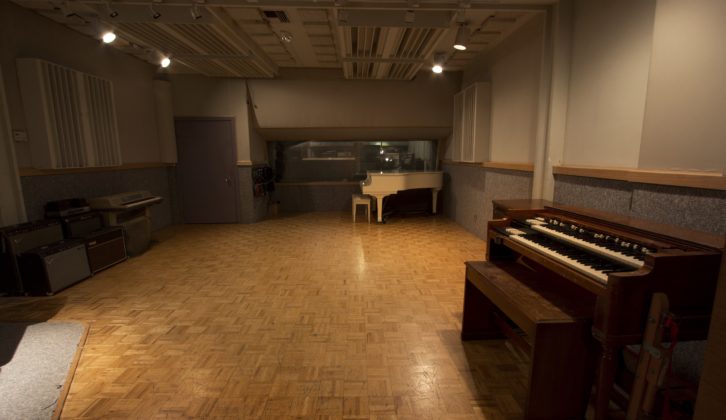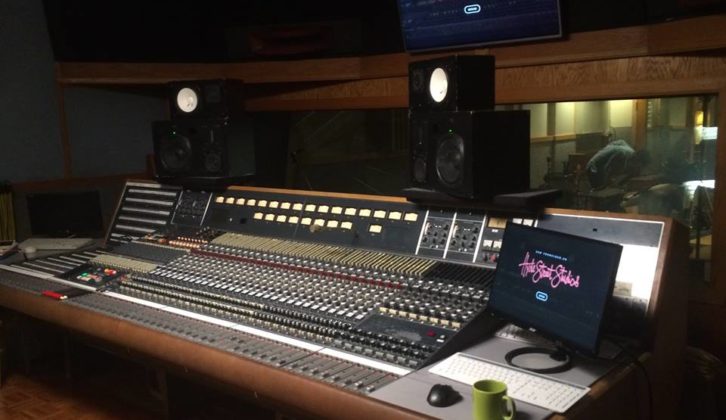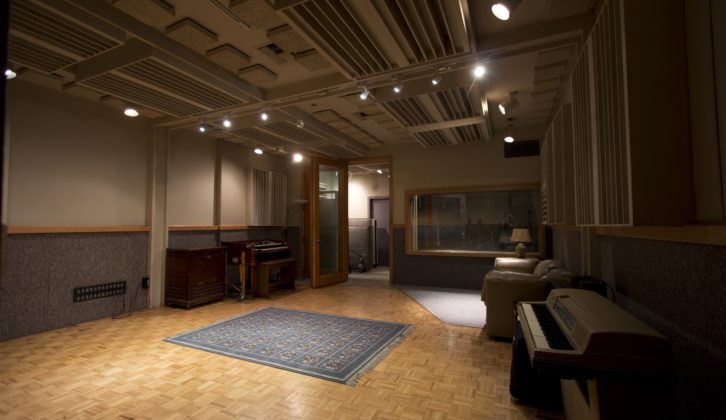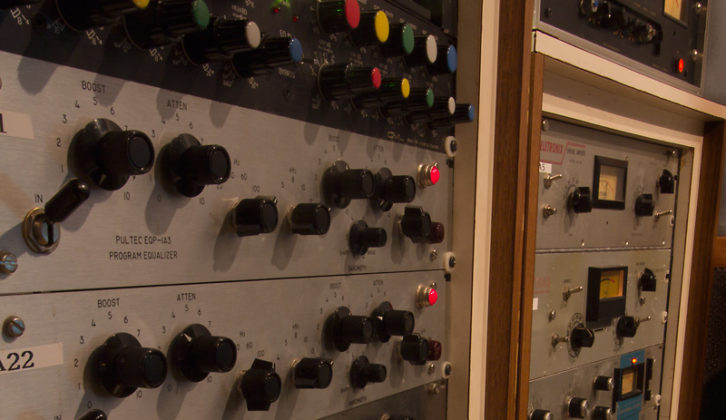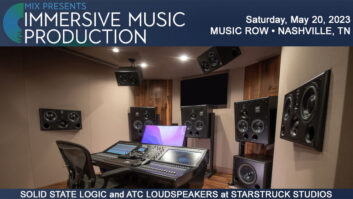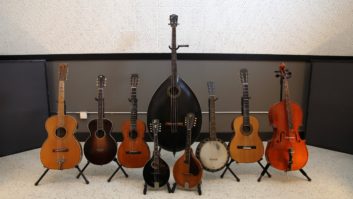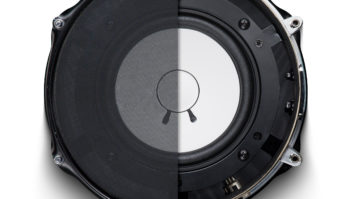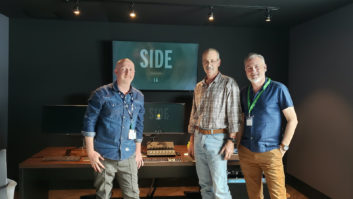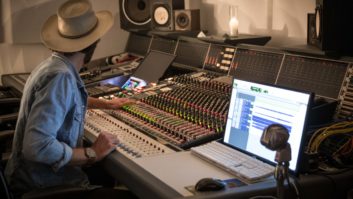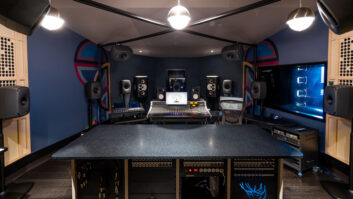San Francisco, CA—Hyde Street Studios in San Francisco’s Tenderloin neighborhood, originally built by legendary recording engineer and studio owner Wally Heider and opened in 1969, has launched a new annex facility, Rancho Rivera, about five miles away. Located in the city’s Sunset district, the new facility is, well, not actually new.
Built in a house on the Avenues, Rancho Rivera was the genesis of Hyde Street Studios, reveals Michael Ward. In 1980, along with partners Tom Sharples and Dan Alexander, Ward acquired and renamed the former Wally Heider Recording facility on Hyde Street in the city. Ward has been the sole proprietor since 1985.
Ward initially built out what is now the Rancho Rivera tracking room—for 20 years, his bedroom—around 1978 as a rehearsal space for his band. Sharples, who lived upstairs, hand-built a console for the room. “He was an electronic whiz kid,” says Ward. It was replaced by a discrete Electrodyne board shortly thereafter.
Sharples went on to became head of R&D at Otari. “One thing led to another,” says Ward. “We went from quarter-inch 4-track to half-inch 8-track to 1-inch 8-track to 2-inch 16-track in about 10 months. The first [Otari] MTR-90 [24-track tape machine] was tried out in that downstairs room.”
Constructed in the basement, with the garage at the front offering 11-foot ceilings, the 20- by 18-foot tracking space, with a 17- by 17-foot control room, has always been ideal for recording four- or five-piece bands, he says. For a time, the power pop band Tommy Tutone (“867-5309/Jenny”) used the room for rehearsals, and frontman Tommy Heath was studio manager for a few months.
“When they got signed, all these bigwigs in long black cars would pull up, clap their hands and say, ‘Oh, it’s magic.’ We put a lot of effort into the acoustical design. It’s a great sounding room.”

San Francisco has always been a secondary market, and until the early 1970s, even Bay Area bands typically gravitated to the Los Angeles studios. To the best of anyone’s recollection, the first LP to be completed at Heider’s Hyde Street facility was Jefferson Airplane’s Volunteers, produced by Al Schmitt and recorded in April 1969. It was the band’s fifth studio album, but the first to be recorded in its hometown. In the decades since, a who’s who of artists—including the Bay Area’s Grateful Dead, Creedence Clearwater Revival, Santana and, later, Dead Kennedys, Green Day, Cake, Train, Tupac and Digital Underground—have passed through the double doors at 245 Hyde St.
Making Waves at Third Coast Recording, Steve Harvey, June 25, 2018
“When we had Studio A open in the early aughts, it was a hard sell; I never understood it,” Ward says. “I’ve seen rate cards from the late-’70s where they were getting $130, $140 bucks an hour in Studio A. Now it’s hand to mouth. You get what you must to keep your doors open, is my general experience.”
Studio A Ampex and racks
Studio A live room, facing the control room
Studio A control room in 2017
Studio A live room, facing the rear
Racked equipment in Studio A
In 2000, Ward bought a former long distance telephone switching substation that had survived the 1906 earthquake, intending to build out multiple digital audio suites with a control room and live space on the upper floor. “I had figured that the only way to succeed in the studio business was to own the building I was in,” he says. But he ran afoul of the city’s planning department and subsequently sold the land.
“I ended up with this money sitting in the bank,” says Ward, so he sank some into Rancho Rivera. It can now comfortably accommodate up to eight musicians simultaneously in multiple rooms interconnected by Cat 5 and audio cables, with cameras and monitors in every space. The control room has a footprint similar to Hyde Street’s Studio D, which is leased long-term to a client, says Ward. Gear from D is now at the Rivera Street annex, including an MTR-90 II tape machine and Meyer Sound, Genelec and Yamaha monitor speakers, and a Pro Tools HD rig.
API’s The Box recently replaced an Avid D-Command controller. “We had a rack of 10 API 500 series modules anyway,” says Ward, “and we’re getting one of those digital fader packs, so it’s a nice analog-digital bridge.”

Former Hyde Street partner Dan Alexander’s name will be familiar to many as an equipment broker specializing in vintage gear. Indeed, on his website, he suggests that he may have coined the term “vintage recording equipment” in 1977, when he began importing large quantities of German-manufactured tube mics.
No surprise, then, that Hyde Street Studios has long possessed an enviable collection of microphones. And as it says on Hyde Street’s website: “All of our tube and other mics are vintage originals. No reissues or re-creations.”
Studio Showcase: Showing Some MOXE in Nashville, Steve Harvey, July 3, 2018
The outboard equipment collection, both at Hyde Street and Rancho Rivera, is no less enviable. A succession of sought-after mixing desks, including Amek, API, Neve and Trident models, have also come and gone over the years.

Referring to that post-real estate windfall bank balance, Ward says, “We’ve been collecting the best equipment over the years, and maintaining it is an expensive and relentless chore. As my last gasp in the studio business, I thought, let’s fix everything.”
The main recipient of that care and attention is the classic 38-input Neve 8038 with Flying Faders automation installed in Hyde Street’s flagship Studio A. It came from Sarm Studios in the UK, where it was used for ADR, he says, so only the first two input channels had seen any use.
Want more stories like this? Subscribe to our newsletter and get it delivered right to your inbox.
Two years ago, Kevin Ink and Dave Dick, Hyde Street’s maintenance techs, began refurbishing the desk, replacing every electronic component possible. “We’ve done a lot of work on the noise floor; the whole grounding structure got improved,” says Ward. “We restored a late-’70s masterpiece of a tracking console into the condition it was in when it was new, in 1978.”
Ward is well aware that owning a recording studio is no get-rich-quick scheme. “It’s a stupid business that you can’t explain to your mother,” he says, wryly. “I suppose that there are people who have made money, but I never met any.”
View from the Top: David Bock, CEO, Bock Audio and Soundelux, by Silas Lynch, April 5, 2017
That said, still in business nearly four decades after acquiring the former Heider facility, Ward believes he may already be seeing a return on his most recent investment. “Business has really picked up over the past year,” he reports. “I attribute it somewhat to the work that we’ve done.”
Hyde Street Studios • www.hydestreet.com
